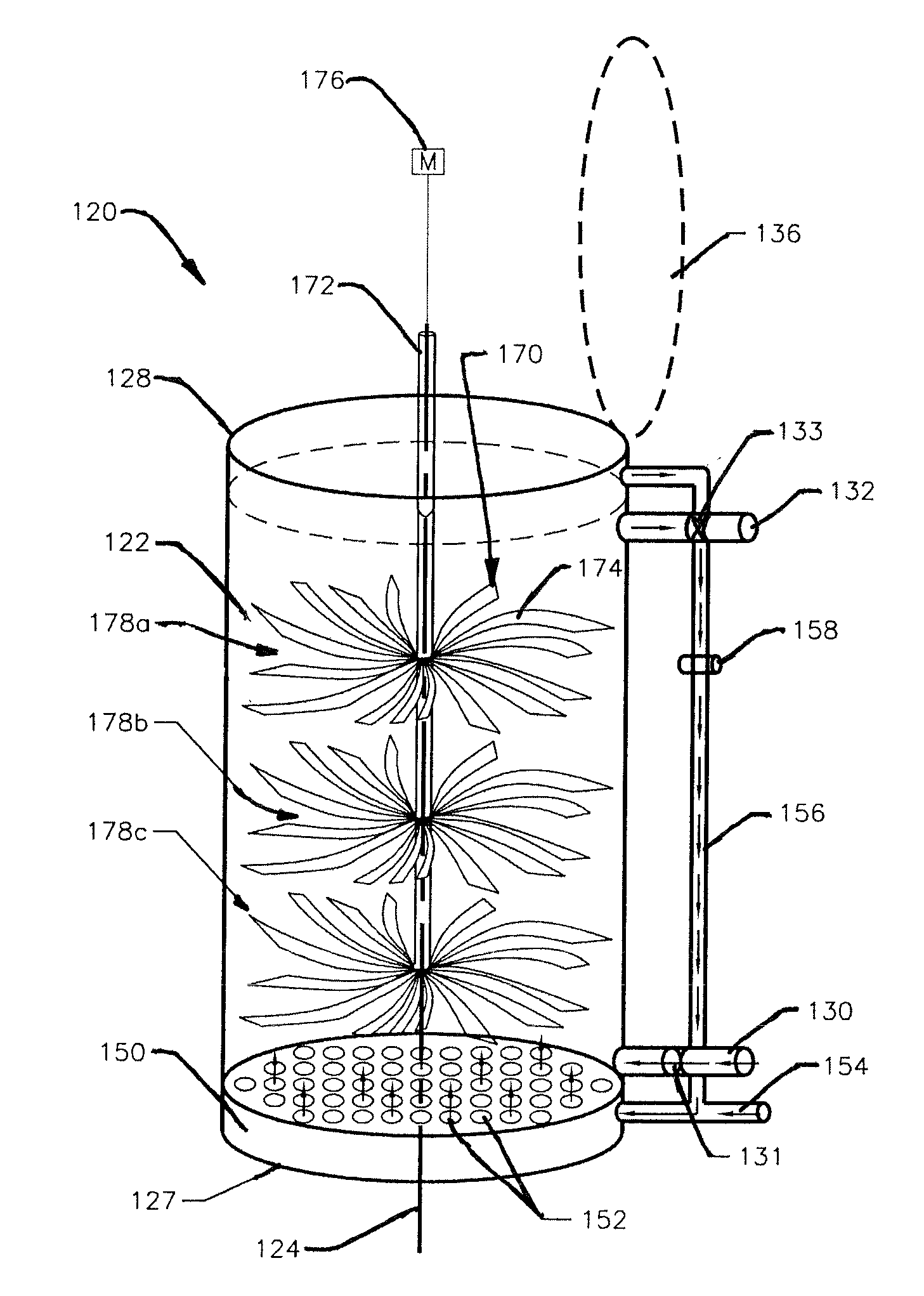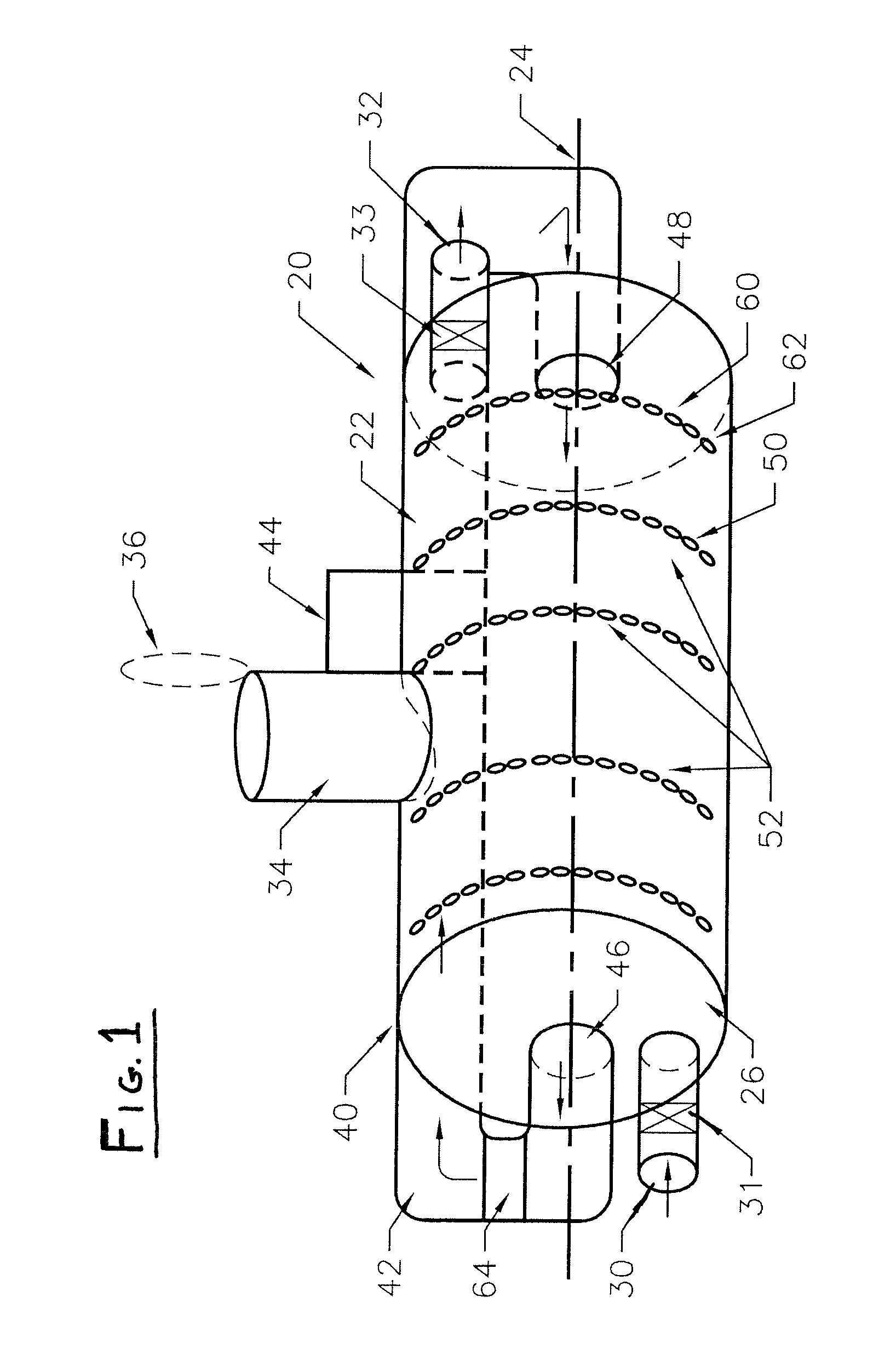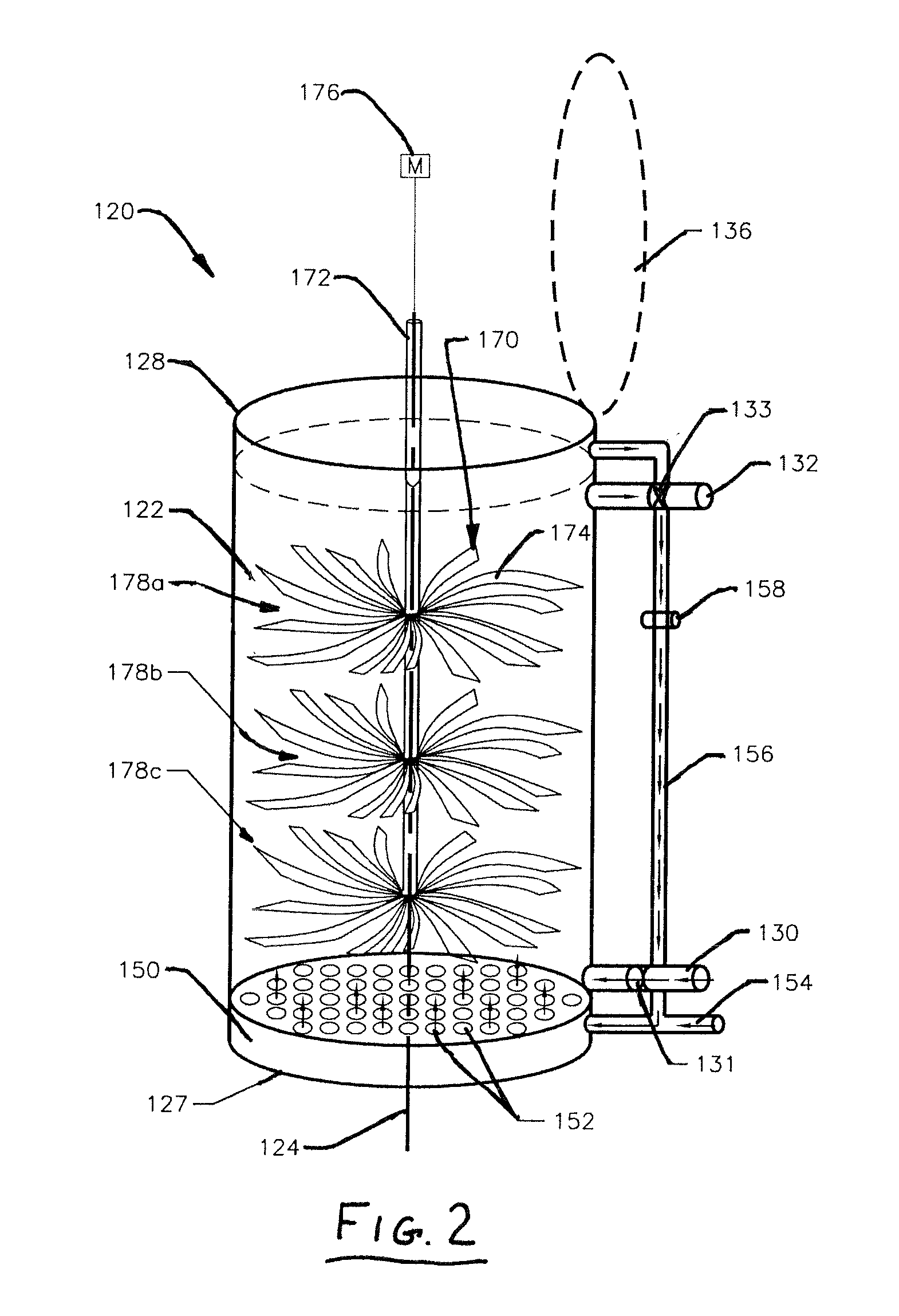Apparatus and Method for Cultivating Algae
a technology of algae and apparatus, applied in the field of apparatus and method for growing photosynthetic microorganisms, can solve the problems of inability to substantially control the various process parameters, inconvenient operation, and further limitation of open-air systems
- Summary
- Abstract
- Description
- Claims
- Application Information
AI Technical Summary
Problems solved by technology
Method used
Image
Examples
Embodiment Construction
[0030]A method and apparatus for cultivating algae is disclosed that uses waste and products from other systems as inputs. The algae produced by the method and apparatus contain polysaccharide, proteins, and lipids, which may be further processed into biodiesel, glycerin and mono sugars (which may be further fermented into ethanol and other alcohol products). The exemplary embodiments employ a closed bioreactor system to produce the algae. The system generally includes a primary tank for receiving a slurry of water and algae. The tank further includes a light source, means for mixing the fluid, a carbon dioxide, and a heat source. The light, fluid mixing, carbon dioxide, are controlled to produce an environment inside the tank that is conducive to producing and cultivating algae. The bioreactor increases algae yield by using a plurality of lights and / or agitating the fluid inside the tank.
[0031]A first embodiment of a bioreactor is illustrated in FIG. 1. The bioreactor 20 generally ...
PUM
| Property | Measurement | Unit |
|---|---|---|
| Flow rate | aaaaa | aaaaa |
| Exposure limit | aaaaa | aaaaa |
Abstract
Description
Claims
Application Information
 Login to View More
Login to View More - R&D
- Intellectual Property
- Life Sciences
- Materials
- Tech Scout
- Unparalleled Data Quality
- Higher Quality Content
- 60% Fewer Hallucinations
Browse by: Latest US Patents, China's latest patents, Technical Efficacy Thesaurus, Application Domain, Technology Topic, Popular Technical Reports.
© 2025 PatSnap. All rights reserved.Legal|Privacy policy|Modern Slavery Act Transparency Statement|Sitemap|About US| Contact US: help@patsnap.com



